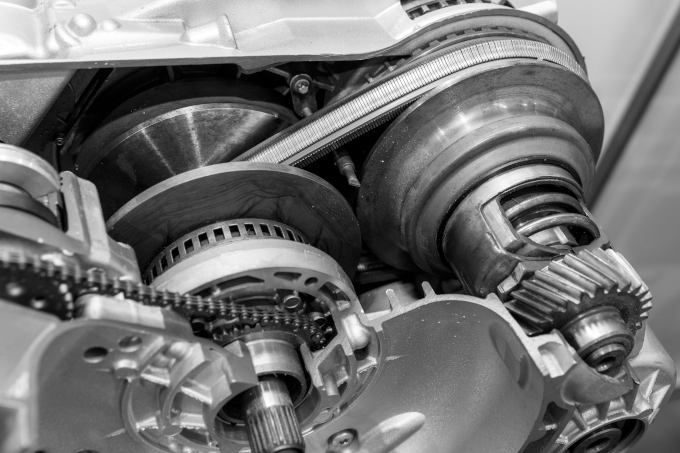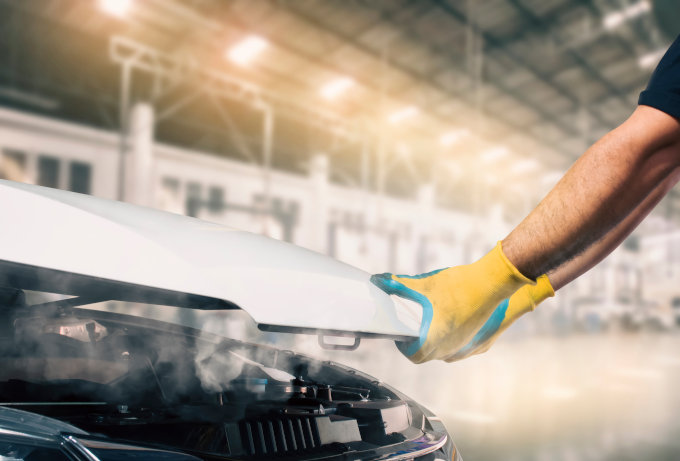CVT transmissions have become extremely popular in recent years for many manufacturers because of their efficiency, light-weight, and quiet operation. Many drivers don’t even know they have a CVT automatic transmission but may notice the transmission does not feel like it is shifting. For that reason, and because they require specialized maintenance, CVT transmissions aren't for everyone, so it is essential to understand how they work and learn about their benefits and disadvantages.
In this article, we will discuss four primary aspects of CVT transmissions:
- How they work
- Pros and cons
- Symptoms of failure
- Maintenance tips
How Does a CVT Transmission Work?
A few years ago, there were two main types of transmissions: automatic and manual. In a manual transmission, the driver presses the clutch and physically changes the gears when needed. In an automatic transmission, this process doesn’t require the driver's input once the vehicle is in motion; it happens via onboard computers. Both these transmissions have gears, bearings, and friction material.
A CVT transmission, also known as a continuously variable transmission, depends on a metal pulley and push belt system. These metal pulleys adjust to continuously variable ratios compared to fixed gear ratios. This type of transmission has become more prevalent in recent years.
A CVT transmission pulley will change its ratios for the different speeds and loads you require of the car. You may notice the RPMs increasing, but the RPMs will remain relatively stable once you get going. You will never feel gears shifting like you do in a conventional transmission.
Mechanics Behind the Pulley System
There are two pulleys in a CVT transmission: the driving pulley and the driven pulley. The driving pulley receives input from the engine crankshaft. The driven pulley sends the output to the driveshaft. These pulleys are connected using a metal chain or push belt. The pulleys move based on computer demand and vehicle needs. The belt moves up and down the pulleys to change the ratio, similar to shifting gears in any gear transmission.
Pros And Cons of CVT Transmissions
With the popularity of CVT transmissions booming throughout the last few years, it begs the question: Is it a better option? The answer is not so simple. CVT transmissions have their pros and cons.
Pros
Increased fuel efficiency
The most significant advantage of a CVT transmission is the increased fuel efficiency. Vehicles with a CVT transmission may get up to 40 mpg, and hybrids could reach over 50 mpg.
Smoother ride
A CVT transmission makes the entire power curve from the engine to the wheels smoother than in a traditional transmission. The transmission doesn’t need to lock onto gear every time it shifts. A CVT transmission constantly makes small adjustments that a driver cannot notice, resulting in a smoother ride. This same feature also makes driving over inclines easier and more seamless.
Lightweight compared to gear transmissions
Unlike a traditional transmission, a CVT transmission doesn’t contain multiple gears. This reduces the overall weight of the transmission, which reduces the pressure on the drivetrain.
Cons
More expensive to buy and maintain
Owning a CVT transmission can be costly. When the transmission fails, it could cost anywhere between $3000 to upwards of $5000 to replace. Even though a CVT transmission consists of fewer components, it tends to be more sensitive to proper maintenance and driving habits. Proper maintenance is key to extending the life of any transmission but even more so for a CVT. With sensitive metal pulleys, metal belts, and chain drives, dirty fluids and filters can cause significant damage. The price factor comes to play during maintenance, as well. They cost almost twice as much to maintain compared to traditional transmissions.
Low weight towing only
You get a significantly lower towing capacity with a CVT transmission. Usually, they are only capable of towing loads less than 1000 pounds. This is why you only see CVT transmission on smaller vehicles.
Signs That Your CVT Is About to Fail
If you own a car with a CVT transmission, you need to be aware of the signs of failure. Like any other major component in your vehicle, an early diagnosis will reduce the damage. Here are the signs you need to keep an eye out for:
Overheating
Transmission overheating will be the death of any transmission. Overheating is typically due to a lack of fluid (leaks) or maintenance (dirty fluid). Either way, it is a significant issue that requires immediate attention.
Fluid leaks
CVT transmission can leak from many locations. While some are easy to address, some might require more work. A fluid leak that’s not corrected can cause irreparable damage to your transmission. Dirty transmission fluid will also result in similar damage as a leak. With time, your transmission fluid will get contaminated with dirt and debris, which decreases its ability to keep everything lubricated and working correctly.
Vibrations
One advantage of a CVT transmission is the smooth ride. If you notice irregular vibrations or experience excessive vibrations at high speeds, get your vehicle examined and diagnosed by a professional.
Sudden loss of acceleration
CVT transmissions have a reputation for their acceleration. A failing CVT transmission will show weakness in this area. You will notice that your transmission hesitates to accelerate. There may be two reasons for this: overheating and slipping. As the transmission overheats, the acceleration response is delayed. Another possible reason is transmission slippage. When this happens, the engine might rev, but power won’t be transferred to the wheels. In either case, it creates an unpredictable response that could create a dangerous situation while driving.
CVT Transmission Maintenance Tips
On average, a CVT transmission will last between 60,000 miles to 100,000 miles. You could reach the higher end of this spectrum with proper and routine maintenance.
Regular fluid changes
The first and most important aspect of maintenance comes in the form of routine fluid changes. Transmission fluid acts as a lubricant as well as a coolant. Your transmission cannot function without transmission fluid. With time, your transmission fluid will accumulate dirt and debris. Eventually, it will lose its lubricating properties, nor will it flow properly. Most of the symptoms mentioned above can be avoided by regularly changing the transmission fluid. So, how often do you need to replace transmission fluid? Check your vehicle’s owner manual for the most accurate recommendations.
Taking it easy
CVT transmissions aren’t designed to handle a lot of stress. They are smaller than regular transmissions and are primarily present in smaller vehicles. Since CVTs don’t handle excess torque well, overloading, off-roading, or towing heavy loads will significantly reduce its life span.
Finding the right technician
Finally, if you are getting any work done on your transmission, take your car to a certified, professional technician. CVT transmissions have only gained popularity in the past few years. Few technicians have the tools, knowledge, or experience to work on them. Poor servicing or mishaps during repairs will cause further damage to your transmission.
Conclusion
CVT transmissions work in a completely different manner compared to traditional transmissions. Are CVT transmissions the best choice? They have their pros and cons. Depending on your requirements, you should decide whether it suits you. CVT transmissions are constantly evolving in performance, efficiency, and reliability. Before purchasing a vehicle with this type of transmission, do your research. Not all manufacturers offer CVT transmissions, nor do they share the same standards for CVT transmissions.
We’re Here to Keep Your Transmission in Top Shape
AAMCO is the best option for fixing your vehicle's transmission, whether it’s an automatic, manual, or CVT. Our technicians have the experience and knowledge to get the job done right the first time at an affordable price. Schedule an appointment at our AAMCO Knoxville Center today!











